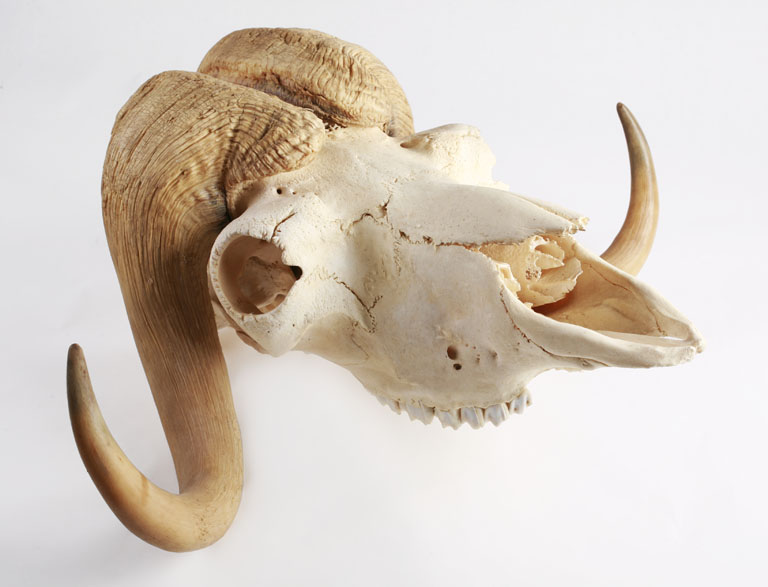Adaptation
Since the Ovibos moschatus live in such extreme environments,
they have had to adapt their ways t o conform to such severe arctic
temperatures. Their body is covered head to toe with fur except
in-between the nostrils and lips (Elder 2005). Protruding out of their head are
cream-colored horns. These horns synthesize together at the center
of the head and drop down on both sides while curving up at the tips
to create sharp hooks that grow with age (Muskox 2014). The horns function as
protection against predators or other musk ox that want to head-butt
as a sign of dominance (Elder 2005). They walk relatively low to the ground
because they have adapted to have short legs to subdue to the cold.
o conform to such severe arctic
temperatures. Their body is covered head to toe with fur except
in-between the nostrils and lips (Elder 2005). Protruding out of their head are
cream-colored horns. These horns synthesize together at the center
of the head and drop down on both sides while curving up at the tips
to create sharp hooks that grow with age (Muskox 2014). The horns function as
protection against predators or other musk ox that want to head-butt
as a sign of dominance (Elder 2005). They walk relatively low to the ground
because they have adapted to have short legs to subdue to the cold.

This animal specifically has two types of fur to keep it warm from
the harsh climates all around (Angier 2010). The topcoat consists of guard hairs
that protect against wind, precipitation, and insects. This is a
long, dark, shaggy coat that looks like the animal has a blanket
draped over it. This blanket like layer is so long that it brushes
on the ground and is often referred to as a “skirt” (Muskox 2014). The second
layer of fur on the Ovibos moschatus is called the qivuit. The
qivuit is an underlying layer that insulates the musk ox like a
winter coat. It is a lighter color where the guard hairs are
shorter, usually on the back, and darker colors where it is
lengthened, making it look like a saddle has been placed upon their
backs. This layer sheds in the spring for the summer months but then
grows back in the fall to withstand the arctic. Because of the heavy
layers, this animal is easily capable of overheating. Although it is
generally slow moving, the Ovibos moschatus can run up to 25 mph if
challenged or threatened (Elder 2005).
Along with their horns and heavy coats, another way the Ovibos
moschatus has adapted to the northern wintry would be the way it
preserves its body fat for the winter (Gustine 2010). Since the winters can be
harsh, they have to build up fat during the summer months because
their vegetation isn’t as abundant in the winter (Gustine 2010). This is done to
reassure that starvation won’t be a factor. Another reason the
females preserve body fat is to supply more milk for their young
(Elder 2005).
Since the babies are born directly into the piercing cold, they have
adapted to be birthed with brown baby fat. Brown fat is an
alternative way to keeping the babies warm instead of just relying
on their fur. It acts as an internal insulation by generating body
heat to keep the animals from shivering.